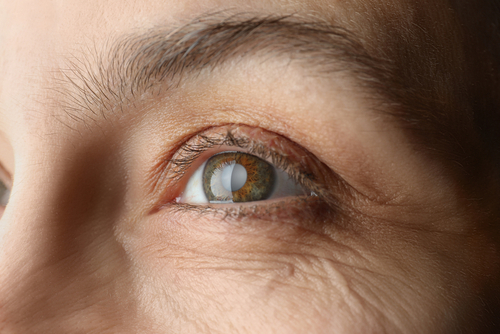
Posted by: Missouri Eye Institute in Blog on August 1, 2023

Cataracts are a very common eye condition that will eventually affect everyone at some point in their life. Cataracts slowly develop in the eye, physically blocking out light until sight becomes difficult.
During this process, you can experience a number of other symptoms, such as faded colors and double vision. Keep reading to learn more about cataracts, including whether or not they cause glare!
A cataract is the clouding of the lens. The lens is located inside the eye, right behind the pupil, and is responsible for adjusting the focus of your vision.
Usually, the lens is clear, but as you age, the lens hardens, and proteins inside the lens break down and begin to clump. These clumps grow larger and begin to distort vision and eventually block light from reaching the retina at the back of the eye.
Depending on how cataracts form in your eyes, you can experience different symptoms. If a cataract is forming in the center of your lens, it is called a nuclear cataract.
This type of cataract can have an interesting effect on your vision. You may actually notice a temporary improvement in your reading vision, as the cataract causes your lens to swell. However, eventually the cataract changes color and darkens.
Sometimes cataracts grow from the outside inwards. Cortical cataracts start at the edge of the lens “cortex.” They grow towards the center in long streaks or wedges.
The cataract that causes glare more often than other types is the posterior subcapsular cataracts. This cataract forms on the back of the lens.
As light enters the eye, it bounces off the cataract and is scattered around the inside. This is what causes the painful and distracting glare.
In addition, you can expect symptoms such as poor close-up vision, halos forming around light fixtures at night, and difficulty seeing even in bright light.
The best way to reduce glare from cataracts before you have them removed is by reducing the light that enters your eyes. Wear a wide-brimmed hat outdoors, as well as sunglasses.
Make sure the sunglasses you wear are in good condition and are rated to block out UV radiation. Exposure to the sun’s UV rays can speed up cataract development and cause other problems.
However, once glare, and other cataract symptoms begin to significantly affect your vision, it will be time for cataract surgery.
Cataract surgery is done using a strong topical anesthetic to help you stay comfortable during the procedure. First, your cataract surgeon will open the cornea.
The cornea is the clear dome-like tissue that covers the pupil and iris. The cataract surgeon makes a small incision, leaving the cornea barely attached to the eye.
This opening allows the cataract surgeon to insert a small instrument into your pupil. The instrument emits sound waves that are able to break apart the lens without damaging the surrounding eye.
The pieces of the lens are extracted using gentle suction. The natural lens is replaced with an artificial lens.
There are many different types of artificial lenses to choose from, each with its own benefits.
Do you want to learn more about cataracts and cataract surgery? Schedule an appointment at Missouri Eye Institute in Joplin, MO, today!
Springfield
1531 E Bradford Parkway Ste 100
Springfield, MO 65804
Branson
1000 James F. Epps Rd Ste 2
Branson, MO 65616
Joplin
4500 E 32nd St
Joplin, MO 64804